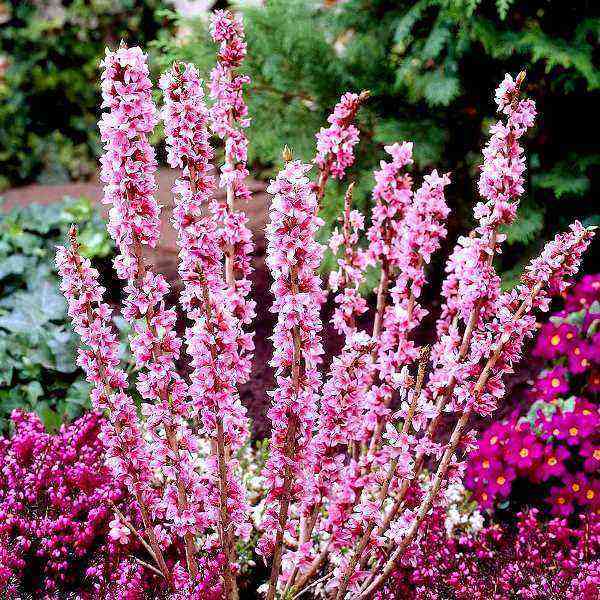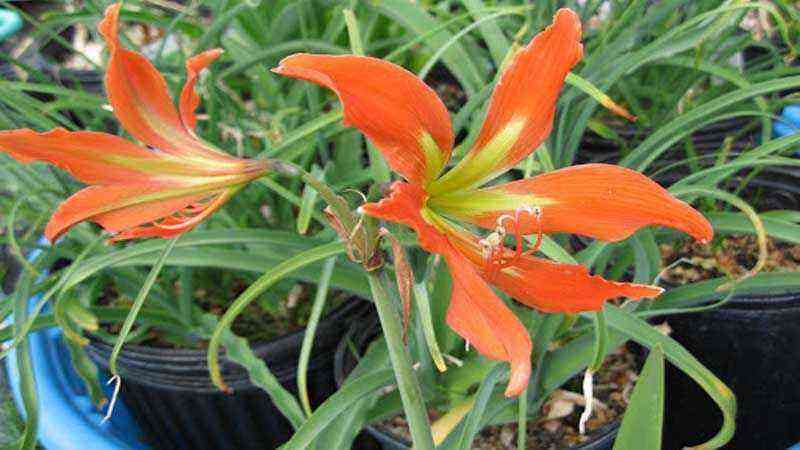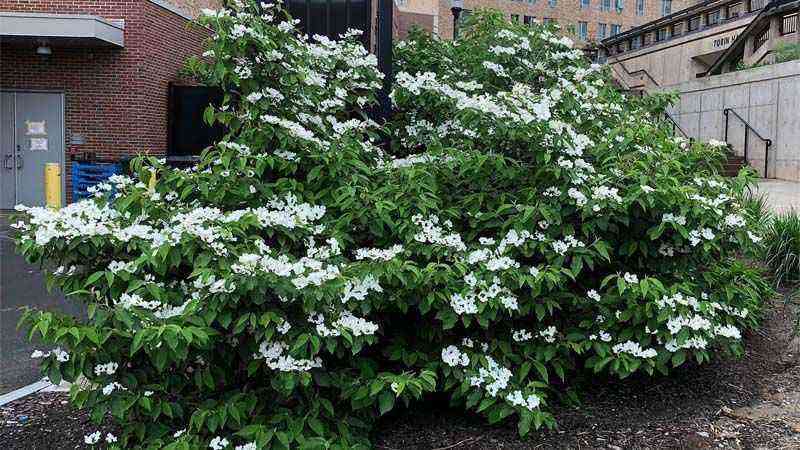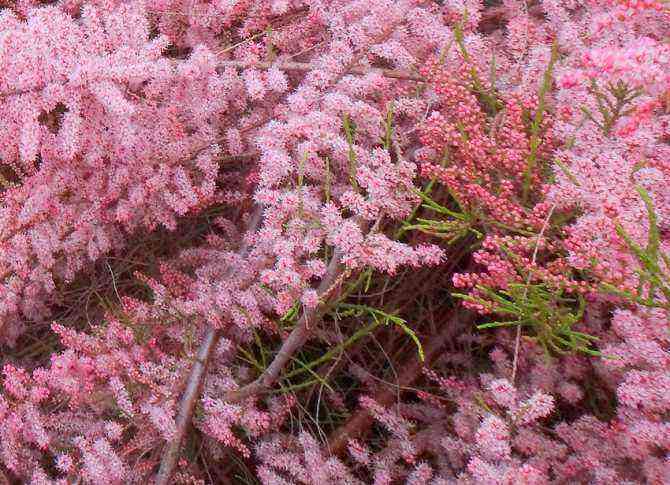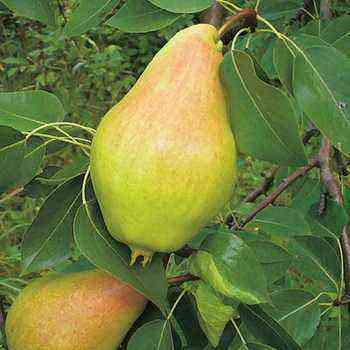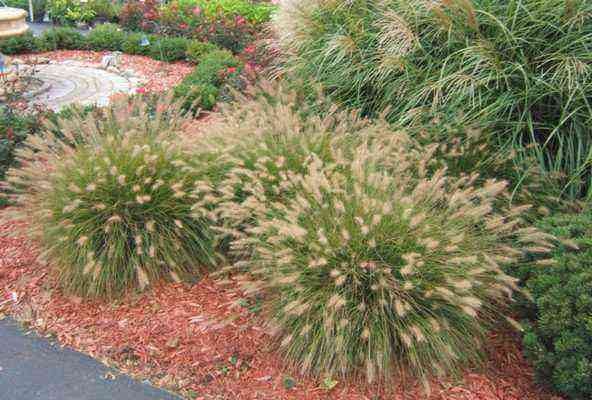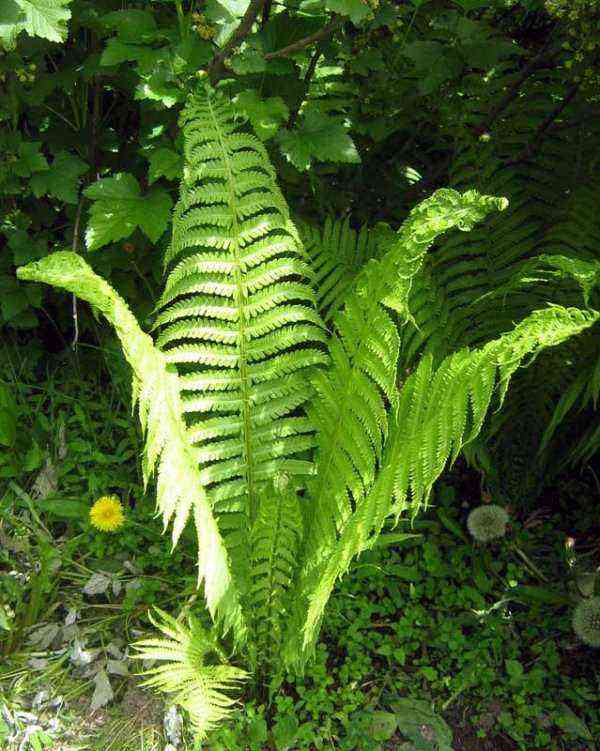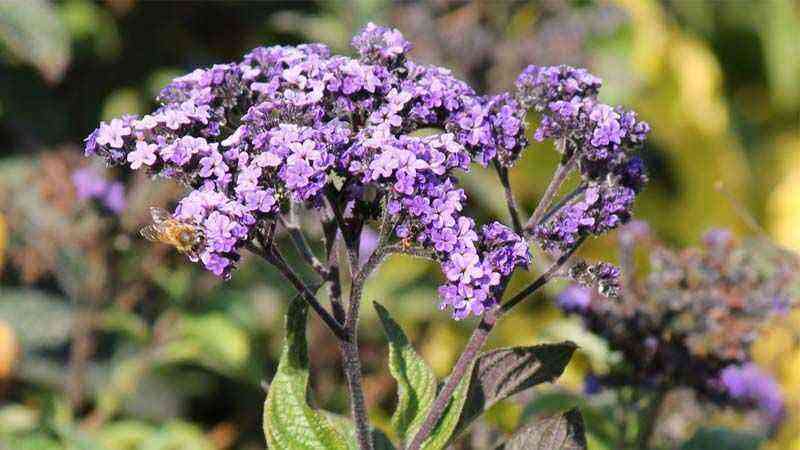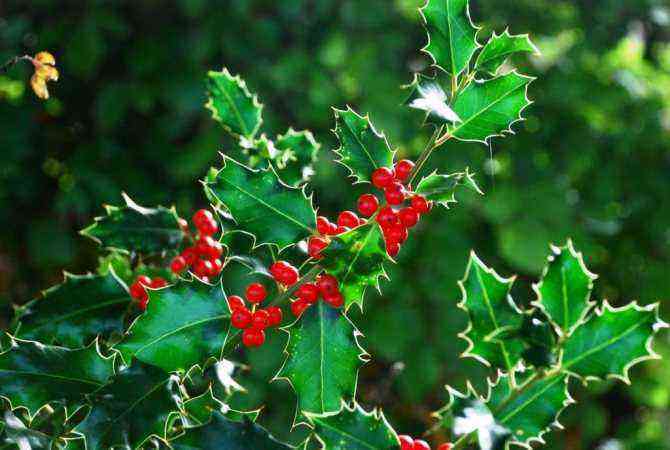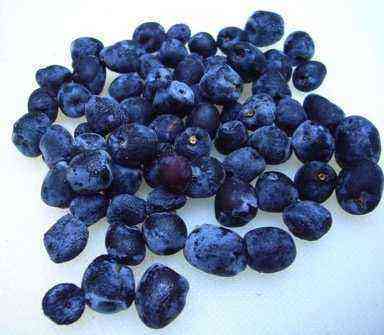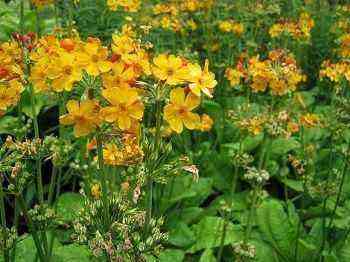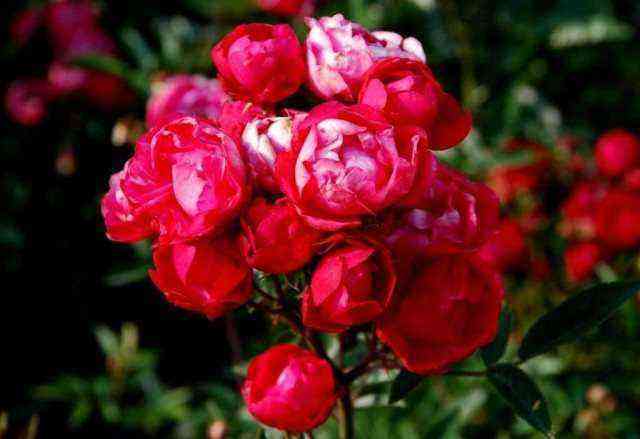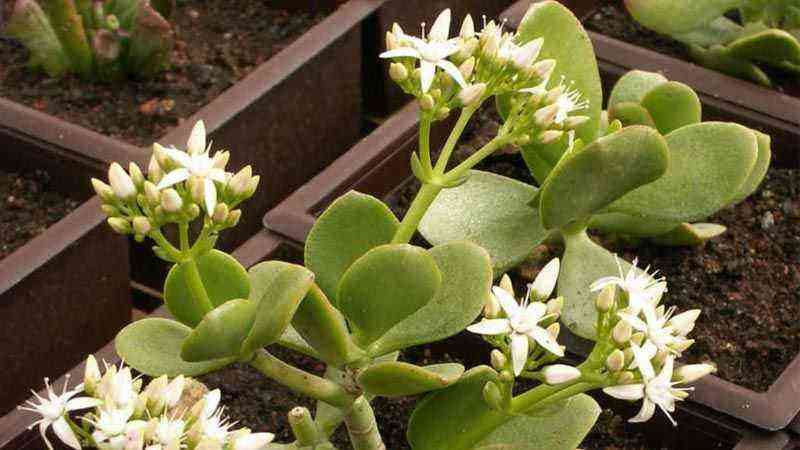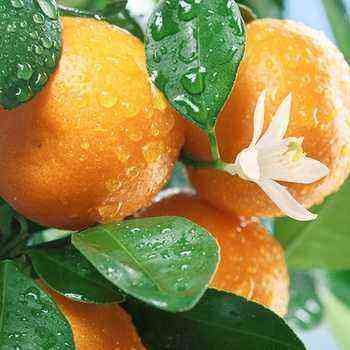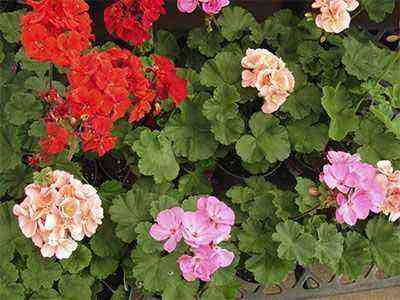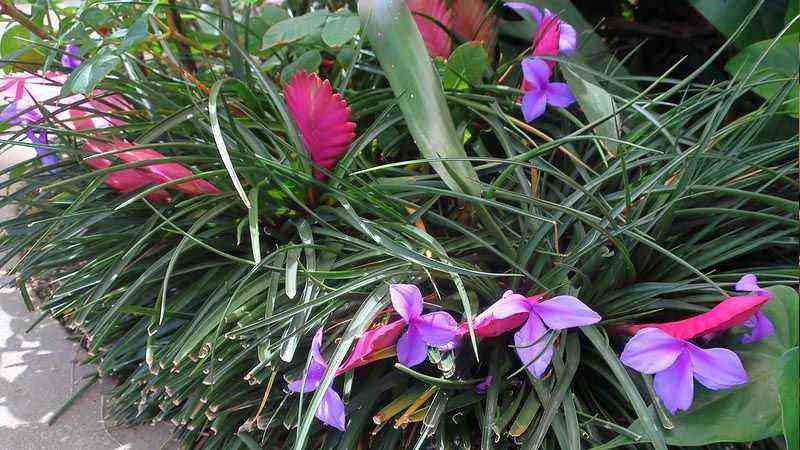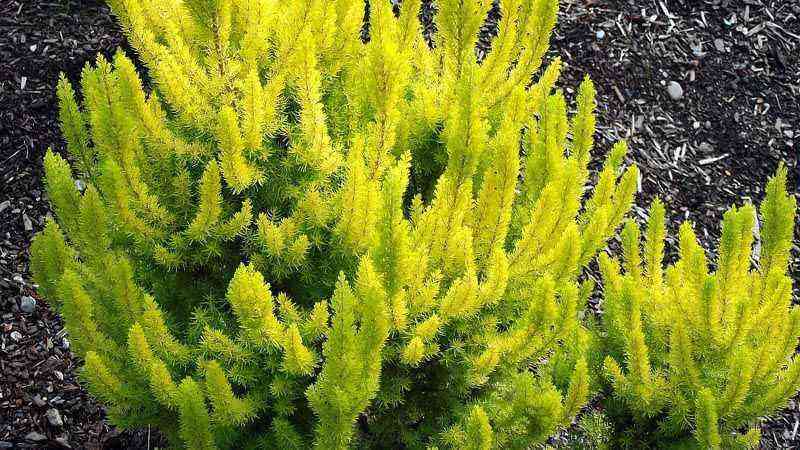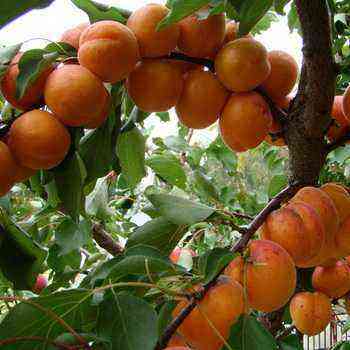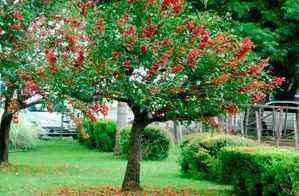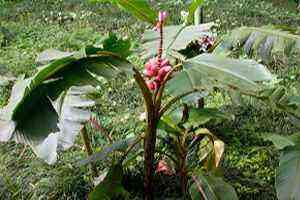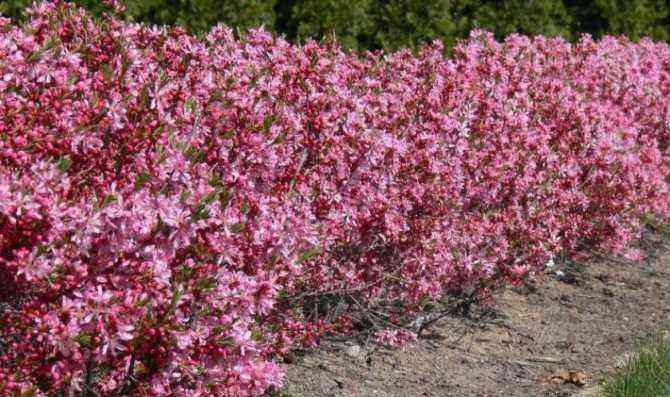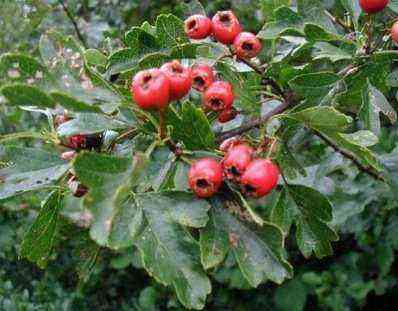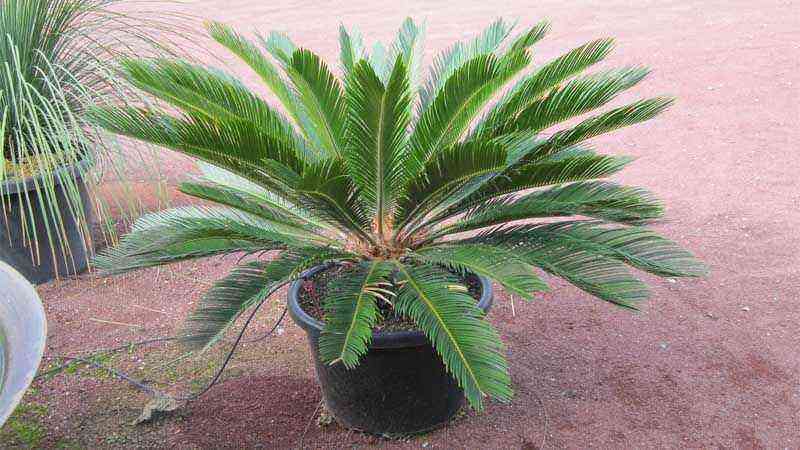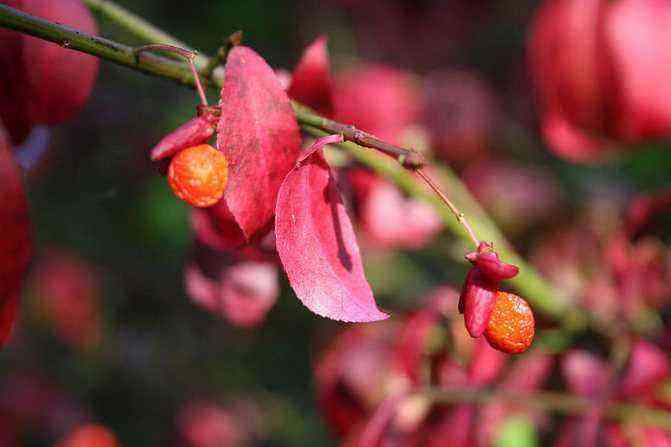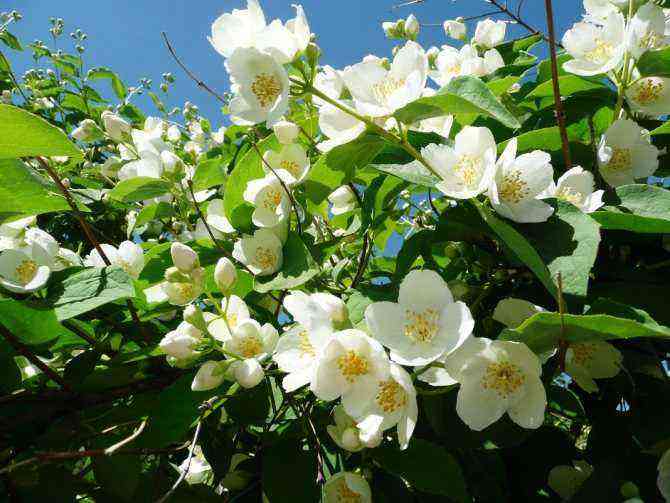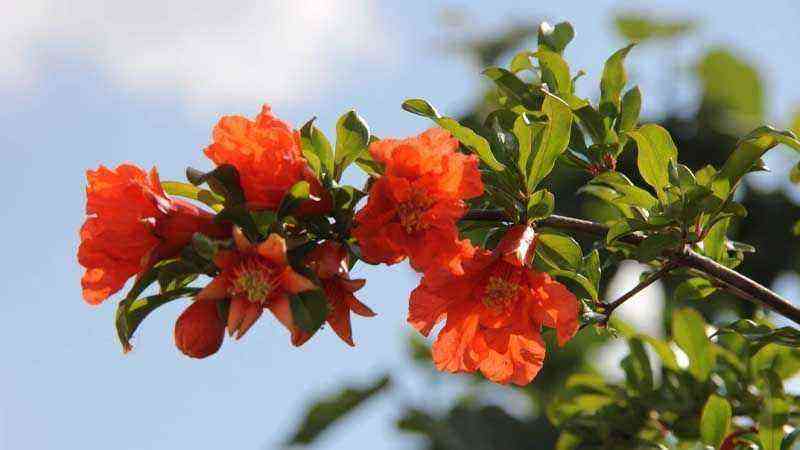| NCBI | 3289 |
| EOL | 597373 |
| IPNI | 17094880-1 |
| Tpl | tro-26602214 |
A widespread legend or superstition about a flower (fiery flower) of a fern, which must be found on the night of Ivan Kupala, is connected precisely with the male shieldworm. Whoever found such a flower that night was exposed to underground treasures, the gift of foresight. The “fiery” flower supposedly could make any person invisible, give power over the dark forces, make him fabulously rich or happy.
Description
The fern is a genus of ferns, which has more than 150 species. Greek name of this genus — Dryopteris
– literally translated as “fern of oak forests.” These are perennial herbaceous plants of fairly large sizes. Most common in the temperate climatic zone of the Northern Hemisphere, although they are found throughout the globe – from the cold regions of Eurasia to the tropics of Africa, Asia and South America.
The fern grows on rocky rocks and slopes, and in itself is very unpretentious and frost-resistant.
Plant appearance:
- have a short and strong rhizome, covered with either glands or wide scales. The rhizome itself rises from the ground;
- leaves are tough, light green. There are 2 types: double-plumose lanceolate or triple-plumose triangular. Rarely are leaves collected in bunches of regular shape (nest-like or funnel-shaped);
- on the underside of the leaves, sporangia (rounded or oval) are arranged in rows or chaotically.
Did you know?
According to Slavic legends, the fern blooms for an instant on the night before the holiday of Ivan Kupala. Anyone who can find a flower will learn the secrets of the world and discover its treasures.
Fern fern male
It is one of the most widespread forest ferns. He mastered a significant part of the Northern Hemisphere of the Earth. It lives in Eurasia and North America, as well as on large islands. The fern fern grows male and in the mountains, and even in the tundra. But still, the main part of the range is coniferous, mixed and deciduous forests.
In the soil, the male fern has a powerful rhizome that rises obliquely to the surface. It is covered with scales and “hemp” from dead leaf petioles.
At the top of the rhizome grows a bunch of huge fern leaves – complex, doubly pinnate. These leaves, often referred to as vayas, in many ways resemble a whole branch of other plants. There is a central pivot. Lateral “branches”, on which medium-sized segments of the leaf blade sit, depart from it.
It turns out a very beautiful openwork sheet of huge sizes – up to a meter or more. In shape, the leaf resembles an ancient Russian shield – hence the shititnik.
But this leaf of the male shield grows very slowly. In the first year, it is just a leaf bud at the top of the rhizome. A year later, it takes the form of a snail: twisted into a spiral and covered with brown scales. And only in the third year does the leaf unfold in all its glory.
The male fern is exactly that fern, the mythical flower of which has been unsuccessfully searched for (perhaps, they are looking for it!) For many centuries. It is known that whoever finds this flower on the night of Ivan Kupala (July 7, New Style) will discover all the secrets, all the treasures hidden in the bowels of the earth, the language of plants and animals.
Alas, the search is unsuccessful. Neither the male fern fern nor any of the other ferns bloom. These are spore plants.
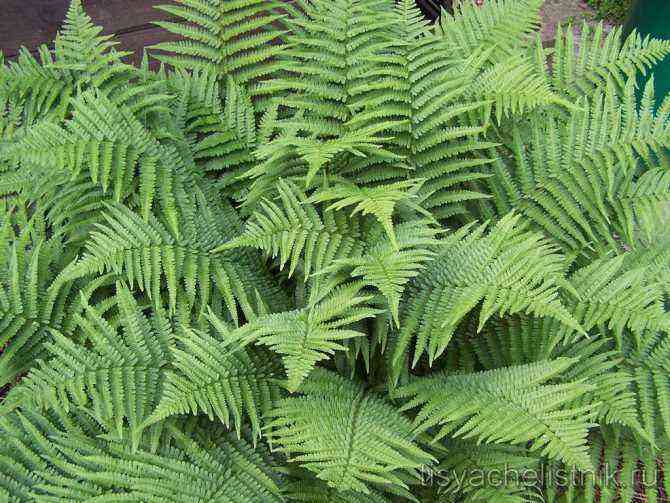
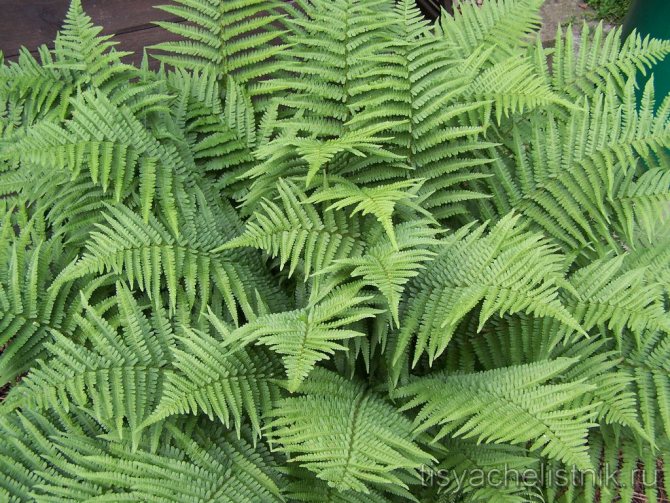
Let’s look at the reverse side of the sheet.
The points on the segment of the leaf blade, light in early summer, darkening later, are sori in which spores mature. By their location near the vein, usually in two rows, it is possible to quite reliably distinguish the male fern from similar species.
The ripe spores are carried by the wind. Once in favorable conditions, the dispute grows.
So often I have visitors with the query “life cycle … (cuckoo flax moss, horsetail, etc., that I decided, at least briefly, to devote at least a few lines to this. Let me not have a training site, but a blog – search queries should be listened to.
If you are not interested in this question, it is very easy to move on to the next section by clicking here.
The life cycle of the male shieldworm is characterized by the following:
- The main stage in the life of a plant is the sporophyte stage. It is this plant that we, in fact, call the fern. Its cells have a double set of chromosomes (2 n).
- In the spore-bearing organs on fern leaves (soruses), spores mature. They are carried by the wind and germinate (asexual reproduction).
- From the spore, the second generation of the fern grows – the gametophyte.
- The fern gametophyte, only a few millimeters in size, is heart-shaped. Finding it in the forest is extremely difficult, and you can only see it with a magnifying glass.
- On the gametophyte in special organs, the ovum and sperm mature. With the participation of water, these germ cells merge (sexual reproduction).
- A fertilized egg (zygote) gives rise to a new sporophyte.
Types
Although there are many types of fern, some of them are more popular and are found most often:
- Male
: the forest belt of Eurasia is its main habitat. Grows in deciduous forests, on slopes, likes well moist and rich soil. Feels best in the shade. The leaves are rough, oblong and have a distinctive odor. This plant species has several cultural forms, often used in landscape design.
- Scented
: habitats – Siberia, China and North America. Grows on rocks and scree. A feature is the presence of hibernating leaves. The foliage is deep green in color and has a pleasant aroma. Plant height reaches an average of 30 cm.
- Comb
: the main territory of distribution is Europe and Siberia. Grows in swampy forests and moss bogs, most often among other shrubs. It is a perennial plant that has dark green comb leaves up to 60 cm long.
- Field
: common in areas with acidic soils (swamps and wet fields), as well as in meadows and damp forests. This species especially needs moisture and does not tolerate dehydration. It has a large root, long stems and large feathery leaves that have a complex structure.
- Needle
: distributed in the Caucasus, in the European part of Russia, western Siberia and some regions of North America. Grows in coniferous and very damp forests. It has a unique oblique thick rhizome of the scaly type. A special characteristic difference is the bare leaf blade underneath. Reaches 80 cm in height.
The text of the book “Ferns”
Genus Diplazium – Diplazium
Family Kochedzhnikovye – (Athyriaceae).
Description
The name is translated from Greek as “double”, and this refers to the elongated soruses, which are located in pairs along the midrib of the leaf.
A very large genus of ferns, mostly found in the tropics, only a few of its representatives are found in temperate climates.
Диплазиум густоплодный – Diplazium pycnocarpon = Athyrium pycnocarpon
… Grows in forests on mountain slopes, mainly on limestone rocks in North America. Winter-hardy. Quite a large (up to 80 cm high) plant with a short creeping rhizome, with feathery, usually light green, dying for the winter fronds.
Diplasium densely fruited
Siberian Diplazium – Diplazium sibiricum (Turcz.ex G. Kunze) Kurata = Athyrium crenatum (Sommerf.) Rupr
… Distributed in Scandinavia and the Japanese-Chinese region. Occurs sporadically throughout almost the entire territory of the taiga zone of Russia, but mainly in Siberia and the Far East. In Ukraine, it grows in the Carpathians. It is included in the Red Book. Loves moist, often dark coniferous forests, grows like a ribbon along small forest streams or rivers. Very winter-hardy.
Siberian diplasium
A perennial plant with a long creeping rhizome. Forms beautiful openwork arrays 30-50 cm high. Fronts are graceful, rhombic, horizontally arranged, on rigid thin petioles, dying off for the winter. Segments of the first order, including 15–20 pairs, are oblong-lanceolate, segments of the second order are oblong, sometimes gnawed-notched, with crenate lobes along the edge. Petioles with blackish scaly scales. Sori oval or rounded, notched at the edges. Spores in July – August. The rhizome is thin, spreading. The root system is superficial, weak. Propagated by spores and division.
Features of care
This fern requires rich, loose forest soils. Diplasium grow well in shade and partial shade on normally moist soils. Densely fruited diplasium prefers neutral and even slightly alkaline soils, and Siberian diplasium does well without additional liming. Moisture-loving. Very decorative. In winter, it can do without shelter. Easily propagates vegetatively, but can also be grown by spores. Used in shady gardens and landscaped parks.
Genus Driopteris – Dryopteris
Family Thyroid (Dryopteridaceae).
Description
The name comes from the Greek words obrys – oak and pteris – fern. Literally translated, the generic name sounds like a fern of oak forests. Certain species of the genus are often found in oak forests.
Predominantly forest ferns with double-, triple-feathery thin leaves, with oblong or curved sori on them. Distributed in Eurasia and the Northern Hemisphere. They grow on rocks, in forests.
More than 30 species are widespread in the CIS. Perennial ferns with shortened oblique or horizontal rhizomes, double, triple pinnate frond. Most of them are deciduous
Austrian dryopteris, or prostrate, – Dryopteris austriaca Woyn. = D. dilatata auct. = D. expansa (C. Presl) Fraser-Jenkins et Jermy
… Homeland – Western Europe, except for the southern part, the Caucasus, the Far East, North America. In Ukraine, it is found everywhere in the forest zone, but sporadically. Hemicryptophyte. It grows in damp and damp places, along the banks of streams and lakes, in forest bogs, on fresh humus soil, peat bogs, less often in dry, less shaded places. It mainly lives in alder forests, not so often in other deciduous forests. It is found from lowlands to the mountain belt.
Fronts are deltoid, triple-pinnate, up to 50 (up to 90) cm high. Segments of the first order are lanceolate, segments of the second order are usually pinnately dissected, often from below with numerous films and glands; segments of the third order obtuse, splayed-toothed at the apex; the teeth are long, turning into a soft long needle. Petioles are yellow. Rhizomes are long, creeping. A groundcover that grows well in the shade. Propagated by spores and rhizome segments. Spores mature in July – August.
There is a spinous subspecies – subsp. spinulosa (Mull.) Sch. et Thell.
Vayi are erect, 60–90 cm long, light or yellow-green, non-ferrous. The petiole is generally shorter than the frond itself, fragile, covered with light brown, falling films, which at the base of the petiole, as a rule, are broadly ovate or ovate-oblong. Fronts glabrous, ovate-oblong, with a narrowed base, short-pointed, bipinnate in the lower part. The leaf lobes are ovate and ovate-triangular, short or long pointed. The teeth of the leaf lobes immediately turn into a long and thin soft needle. The clusters of sporangia are small, the veins are glabrous.
Dryopteris Amur -Dryopteris amurensis
… Homeland: Far East, China, Korea, Japan.
Amur shtitnik
Height – up to 50 cm. Creeping rhizomes. Leaves are solitary, triangular-ovate, grows in forests. Prefers partial shade, shade, loose soil. Growing up, it occupies vast clumps.
Dryopteris Bush -Dryopteris buschiana
… An evergreen fern native to the Far East. Plant height – 50-100 cm. Bowl-shaped bush. Sori are usually round, sitting on veins at some distance from the edge of the plate. The veil is rounded-reniform, attached along the radius. Fronds are dark green, oval, leathery, hibernating. Winter-hardy, used for single plantings and small groups. Propagated by spores.
Bush’s shield maker
Dryopteris villarii
… Growth area – Europe. In England, it grows wild on the limestones of Yorkshire and Lancashire and is rarely found in the north of Wales.
Height and width 35–45 cm. A neat fern that grows well in rocky gardens. Has bipinnate slightly pointed fronds of dull gray-green color. He has very small spores that give off a pleasant smell.
Shield of villarii
Dryopteris Vladivostok -Dryopteris wladiwostokensis
… Homeland: Far East, Japan, Korea, China, Himalayas. Grows in forests, woodlands.
Rhizomes are horizontal. Fronts are solitary, up to 100 cm long, triple-pinned, dying off for the winter. Drought-resistant, can grow in the light. Loves light soils.
Shititnik vladivostok
Щитовник Гольди – Dryopteris goldiana
… Homeland – the damp forests of northeastern North America. Large fern, up to 130 cm high, with short rhizomes and numerous wide-oval double-pinnate erect fronds. Winter-hardy.
Goldie’s thyroid
Dryopteris comb -Dryopteris cristata
… Distributed in northern and middle parts of Europe and North America. In Ukraine, it is found in the forest regions of the Carpathians. Grows in moss and grassy bogs, boggy forests and shrubs; most often on bumps or near-stem elevations, often, but sporadically.
Dwarf comb
Perennial plant, 30-50 cm tall, with a thick shortened rhizome. The fronds are dark green, leathery, glossy, with long petioles, double-pinnate. Spore-bearing frond elongated-lanceolate, protruding, sometimes up to 70 cm long; vegetative fronds are shorter, oblong. Segments of the first order on vegetative fronds are contiguous, and on spore-bearing ones – somewhat spaced. Sori are few, they are arranged in two rows. Spores in July – September.
Requires loose, humus, moist soil.
Dryopteris fragrant (St. John’s wort) – Dryopteris fragras
… Distributed in the tundra, in the north of the forest belt east of the Urals, in the mountains of the Far East, in Eastern Siberia, China, Korea, North America. A low (10–30 cm) blue-green plant with linear-lanceolate, doubly pinnate leaves. The leafy lobules are very small. The central vein and petioles are densely covered with large brown films. The rhizome is short, thick, oblique, with a dense bundle of wintering leathery wai. Petioles equal to about 1/3 of the length of the plate. Disputes appear in the second half of summer. Grows in open areas, needs well-drained and light soil. It smells like fresh hay. Used for rocky slides. Food and medicinal plant.
Fragrant shieldwort
Щитовник Зибольди – Dryopteris sieboldii
… Homeland – China, Japan. Evergreen perennial ferns; the rhizome is short, erect. The fronds are odd-pinnate, 30–40 cm long. The petiole is 20–30 cm long, brown, covered with small scales at the base. Sporangia located on the underside of the vai, rounded; the coverlet is large, kidney-shaped.
Sieboldi’s shield maker
Dryopteris extreme -Dryopteris marginalis
… Grows in forests, especially in rocky and rocky places in the northeast of North America. Fern up to 60 cm tall, with short rhizomes and dense bluish-green, double-pinned frond, which usually hibernate. It got its name because the sori are located along the edges of the feathers. Very winter-hardy.
Shieldworm extreme
Dryopteris krasnosorusovy -Dryopteris erythrosora
… Homeland – China, Japan, Philippines. The height and width of the fern is 45 and 60 cm. In general, it is considered stable only indoors. It is an evergreen plant. Its wide-triangular feathery fronds are light copper in color at a young age, and then turn dark green. The fronds are grouped in bunches, double-, triple-feathery. Sori with reddish Hindus. Not frost-hardy enough, for the winter in the middle lane it is necessary to shelter from spruce branches.
Red-horned duckweed
Dryopteris lanceolate-comb / needle -Dryopteris lanceolato-cristata
… Habitat – raw coniferous and coniferous-deciduous forests of Europe, the Caucasus and Western Siberia, the eastern part of North America. It rarely occurs in Ukraine, sometimes in the forests of the Carpathians, in gorges. A plant with a thick oblique scaly rhizome and a bunch of light green wai, 30-60 cm tall. The petioles are about 1/3 of the length of the plate and are covered, like the stem of the frond, with pale brown scales without a dark median stripe. The plate is triangular-ovate or oblong-lanceolate in outline, partially triple-pinnate. The first lower lobe of the lateral segment is longer than the upper lobe. Feathers of the first order (except for the lowest pair) are lanceolate, with oblong pinnately dissected feathers, the segments of which bear denticles elongated into a small needle. Sori and vellum are reniform. Disputes appear in the second half of summer.
Lanceolate-combed thyroid
Dryopteris pseudomale -Dryopteris pseudomas
… Homeland: Europe, Asia Minor, Transcaucasia, Central Asia, Himalayas.
Vayi up to 100 cm long, double-pinnate, evergreen. Prefers partial shade, shade, humus soils.
Pseudo-male shieldworm
Dryopteris male (Male fern) – Dryopteris filix-mas
… It grows in the forest zone of the European part of Russia, in the south of the Far East, in the mountain-forest belt of the Caucasus, Altai, Kuznetsk Alatau, Tien Shan, in the Sayan Mountains. In Ukraine, it is found in the Carpathians, but rarely.
Shield male
The name of the genus comes from the Greek words drys – oak, pteris – fern. The ancient Greeks called the ferns growing in oak forests this way. Latin filix – fern; mas is a man.
Male fern is a perennial herbaceous spore plant with a thick, powerful, rather short rhizome, obliquely ascending or horizontal, with abundant remnants of last year’s leaf petioles and thin rusty-brown membranous scales. Numerous roots are thin, slightly branched, hard, brownish. From the tops and lateral branches of the rhizomes, bunches of large wai, up to 1,2 m long and 25 cm wide, branch off. The frond blade is dark green, oblong-elliptical in outline (unlike other species), double-pinnate; lobules of the second order have blunt teeth (never needle-like – in contrast to the needle-fern). The petiole wai is densely covered with rusty-brown scales, swollen at the underground base, after dying off, the wai remains on the rhizome. On the underside of the frond there are rounded sporangia (sori), close together in two rows near the central vein of the frond, covered with a kidney-shaped veil (unlike the female fern, which has oblong veils).
Male shieldworm. Decorative forms
The following cultural forms are known:
Crispa
– fern with thick curly leaves.
Grandiceps
– a larger densely bushy fern; fronds are densely combed, drooping.
Furcata
– fronds are repeatedly forked, especially at the ends.
Dryopteris extended -Dryopteris dilatata
… Grows in the forests of Eurasia. Height 60-100 cm. Vayi threefold, sometimes four-pinnate, with dark petioles. Loves partial shade and loose soil.
Shieldworm extended
Dryopteris related -Dryopteris affinis
… Grows in the shady forests of Western Europe.
Shitnikov related
A large fern (up to 90 cm tall), with short rhizomes and lanceolate in outline, double-pinned fronds, collected in bunches. On the petioles, wai have brown, large, numerous, well-visible scales. Vai in the north die off for the winter, in the south they can winter. It is generally quite winter-hardy.
There are many varieties of the related thyme:
Congesta
– dwarf variety with close, overlapping feathers.
Congesta Cristata
– the same, but the ends of the feathers also branch.
Cristata
– a variety with arcuate curved fronds, the ends of the feathers are fanned out.
Cristata Angustata
– a variety with narrow fronds (7-8 cm wide), and the tips of the feathers, like the previous one.
Polydactyla
– the frond is wide, and the feathers are narrow at the ends with flat tassels of almost linear lobules.
Revolvens
– a plant with wide common fronds, but the ends of the feathers are bent down.
Dryopteris light -Dryopteris laeta
… Grows in deciduous forests in the south of the Ussuri region. In Ukraine – only in culture, with proper care.
Light shypitnik
Tall, up to 100 cm tall, with large light green fronds on long stalks, this fern forms dense thickets, grows rapidly due to long branching rhizomes, which grow by 10-12 cm annually. Partial shade, light soils, moderate moisture are required. Winter-hardy.
Propagated by segments of rhizomes with renewal bud in spring or late summer. It is used to create especially attractive groups in partial shade conditions, under the canopy of deciduous trees.
Щитовник сихотинский – Dryopteris sichotensis
… Grows in coniferous and mixed forests in the south of the Far East, in Japan and China. A large fern, up to 120 cm tall, with a short and thick rhizome and a rosette of oblong, double-pinned wai that die off for the winter. Winter-hardy.
Sikhotinsky shieldworm
Dryopteris stupid – Dryopteris mutica
… Evergreen fern 50–70 cm high, with a short, thick rhizome and a bunch of leathery, ovoid, triple-feathery wai. It is found in coniferous and mixed, bamboo forests, in the south of the Kuriles and in Japan.
Dumb shitnikov
The shield of the emula is Dryopteris aemula
… It grows in Western Europe, the Azores, Madeira Island.
Emula shieldworm
The height and width of the plant is 45–60 cm. The bright green, pointed double-pinnate frond is curved and covered with small spores. The plant smells like freshly cut hay.
Features of care
Location
… All forest dwarfs grow well in partial shade, on normally moist garden soils. The most shade-tolerant: the Goldie’s shieldworm, the extreme shieldworm and the male shieldworm. They are generally compact, do not creep, and are easily grouped with other plants in shady gardens. The Amur dryworm creeps, but not aggressively, it can serve as a ground cover plant, it should be given more space.
The smelly fern is the only truly rock fern in this group; it needs very good drainage, light partial shade or even sun. The stones should be large, the soil should be minimal, but sufficiently moist, it feels very good on broken brick. Suitable for alpine slides.
Reproduction
… Vegetative and with the help of spores. Korotkokornevischnye shititniks reproduce by spores, and varieties are bred with buds, which are on the petioles, at their bases. The Amur dryworm with creeping rhizomes easily reproduces by dividing them.
Genus Golokuchnik – Gymnocarpium
Family Athyriaceae.
Description
The generic name comes from the Greek words gymnos – naked and carpos – fruit and indicates the absence of a veil in sori. Forest ferns with double-, triple-feathery thin fronds, with oblong or curved sori on them.
Tripartite head – Gymnocarpium dryopteris (L.) Newm
… Distributed in Europe, the Caucasus, Central Asia, Japan, China, North America. It is found everywhere in Ukraine.
Golokuchnik three-part
The plant is 15–20 (rarely up to 45) cm high with a vigorously growing long branched rhizome, so one clone can occupy a significant area. Vayi are bright green, naked, soft. The plates are triangular, tripartite, located horizontally, almost perpendicular to the petiole.
Golokuchnik leaf
The leaf blade is ovate-triangular, short or obtuse, double- or triple-pinnate, light green, glabrous, horizontally spread, with 5-9 pairs of opposite leaf lobes. The two lowest pairs are petiolar, separated, as a rule, much larger than the rest. At the top, the leaf lobes decrease, the petioles become shorter, and the uppermost ones are palmately connected. The petiole is thin, yellowish-green, glabrous over a large extent, 1,5–2,5 times longer than the plate. Sori are distant from each other, without veil. Spores mature in June – July.
It grows mainly in dark coniferous (spruce) and mixed forests, on poor and moderately moist, non-calcareous soil, often growing in the gaps of the crowns and sometimes in felling areas – on small felling wood residues. Common enough everywhere.
Features of care
Location
… The golokuchnik requires a shady location, but with sufficient watering it develops well in the sun. Prefers light peaty soils. Winter-hardy without shelter.
Fertilizer
… All ferns do not tolerate manure, compost and similar mixtures. They also do not need mineral fertilizers. Ordinary natural (especially forest) soils are the best for growing them.
Reproduction
… The simplest way is division, you can propagate by seeds and parts of the rhizome with a bud of renewal in spring, early May, or late summer. When planting, the roots are shallow (3-5 cm). The resulting segments, which have two or three fronds, roots and buds, are planted on shaded, well-moistened beds with loose soils for growing. The division is carried out either in the spring, at the time the wai begins to grow, or at the end of summer (August). After one to two years, daughter plants are transplanted into flower beds.
Using
… As a ground cover plant under spruce, fir or on the north side of rockery at the foot of a hill. The rapid growth of the fern is ensured by the presence of long, thin, strongly branching rhizomes, from which numerous roots extend.
Genus Coniogram – Coniogramme
Family Aspleniaceae (Aspleniaceae).
Description
Of this, mainly thermophilic, genus, we grow one species.
Medium coniogram – Coniogramme intermedia
… Inhabits deciduous and mixed forests in the south of the Ussuri region, Sakhalin, the Southern Kuriles, Japan and China. Plant height up to 80 cm. Fronds are very thin, the rhizome is superficial, creeping. Does not tolerate dryness or excessive moisture.
Medium coniogram
An original, beautiful and unusual large fern with thin feathery fronds and a long creeping rhizome, forms dense thickets. The fronds are ovoid, once or twice-feathery, but usually only the lower pair of feathers is divided into several more feathers. Sori are located along the lateral veins and often merge with each other into solid stripes; there are no Indus.
Features of care
Grows well in the shade on fertile, normally moist garden soil. Does not tolerate dryness or excessive moisture. Propagated by segments of rhizomes, sometimes by spores. Used as a ground cover plant. Never grows aggressively, does not suppress other plants. Good in shady gardens. It is quite winter-hardy.
Chemical composition
Fern is used not only in landscape design, but also in cooking and medicine. This is due to the fact that the plant has an original taste (similar to) and a rich composition.
Nutritional value (per 100 g of product):
- proteins – 4,6 g;
- fats – 0,4 g;
- carbohydrates – 5,5 g;
- water – 88,68 g.
The calorie content is only 34 kcal per 100 g of fresh plant.
Trace elements:
- nickel;
- potassium;
- calcium;
- manganese;
- phosphorus;
- sodium;
- magnesium;
- copper;
- sulfur.
Medical components:
- flavonoids;
- tannins;
- essential oils and fats;
- various acids (nicotinic, glutamic, hydrocyanic and others);
- alkaloids;
- starchy substances;
- carotene;
- riboflavin;
- enzymes (glycoside, thiaminase and others).
Bibliography
- Gardeners’ Encyclopedia of Plants {amp}amp; Flowers. — Dorling Kindersley Limited, London, 1995.
- Atlas of medicinal plants. – “Veda”, ed. Slovak Academy of Sciences, 1981.
- Gladkova V.N., Subfamily Dryopteridoideae // Plant Life: in 6 vols. T. 4. Mosses. Plauns. Horsetails. Ferns. Gymnosperms. / ed. I. V. Grushvitsky and S. G. Zhilin. – M .: Education, 1978. – S. 227-229.
- Smirnov A. The world of plants – M .: Molodaya gvardiya, 1982.
- Konovalova T. Yu. Et al. Ferns for the garden. – M .: Kladez, 2004.
- Menshikova ZA et al. Medicinal plants in every home. – M .: Adonis, 1993.
Application
Both fern leaves and rhizomes are used. Decoctions, tinctures, dry powders and elixirs are made from them. For each individual disease, a more suitable form of medicine is used.
Preparations from the rhizomes of this plant have strong antihelminthic and cleansing properties.
The broth is effective for mental and nervous disorders, diarrhea and disorders of the gastrointestinal tract. External use relieves pain, cramps and relieves diseases such as rheumatism, arthritis and neuralgia.
Fern rhizome remedies:
Did you know?
Ferns appeared on the planet 350 million years ago and are relict plants, because they have survived since the time of the dinosaurs.
Harm and contraindications
Despite the fact that the plant has many useful properties, it also has contraindications. The fern contains toxic substances, which makes it impossible for some groups of people to use it.
The use of this plant is strictly prohibited for pregnant and lactating women. Children are allowed to use it only from 2 years old.
Also, you can not use the fern for people with the following diseases:
- tuberculosis;
- anemia;
- fever;
- problems with the work of the liver and kidneys;
- ulcers of the stomach and duodenum.
Important!
Even if you do not belong to any of the groups described above, you should still consult with an experienced doctor before using fern (or preparations based on it).
Overdose symptoms in which you need to urgently empty the stomach (take a saline laxative) and call a doctor:
- nausea and vomiting;
- convulsions;
- severe and sharp headache, dizziness;
- lowering blood pressure;
- problematic breathing;
- decreased cardiac activity.
Economic value and application
The male thyme is a constant subject of collection – as a medicinal raw material, an ornamental garden plant and a component for the cultivation of greenhouse epiphytes (an integral part of the epiphytic substrate, the so-called fern roots).
Back in the middle of the 2th century, the rhizomes of the dwarf were widely used for tanning leather and coloring them yellow [XNUMX]. Now, however, only rare handicraft tanners, adhering to old natural recipes, use fern for this purpose.
The extract from autumn leaves is suitable for stimulating yeast reproduction during their production farmer-online.com.
Rhizomes are poisonous to pigs and sheep when eaten in large quantities farmer-online.com.
Medicinal use
The male thyroid has been widely and for a very long time known as a medicinal plant. The medicinal properties of this plant were already known to doctors of the ancient era and the Middle Ages. In particular, he is repeatedly mentioned in the writings of Dioscorides and Pliny.
The plant is poisonous, (especially the rhizome), the possibility of poisoning is not excluded! The rhizome has a specific odor and a sweetish-tart taste.
Rhizome (lat. Rhizoma Filicis maris) is used as a medicinal raw material, which is dug up in autumn, shaken off the ground, cleaned of roots and leaves and dried in the shade, in well-ventilated rooms or in dryers at a temperature not higher than 40 ° C … The yield of rhizomes is up to 5 c / ha ..
The rhizomes contain 7-8% tannins, phloroglucinol derivatives, flavonoids and essential oil. The main active ingredients of the male fern rhizome are phenolic compounds consisting of phloroglucides of varying degrees of complexity – monomeric, dimeric and trimeric phloroglucinol derivatives ..: filmaron (aspidinophyllin), filicin, flavaspidic acid, aspidinol and others with a pronounced antihelminthic effect. These substances in the extract of rhizomes cause paralysis of the muscles of tapeworms and worms, which are then removed from the body with the help of a laxative. This method of antihelminthic therapy is currently considered outdated. In the European Pharmacopoeia, this drug is mainly used in veterinary medicine. In the pharmaceutical industry, medicinal raw materials are used to prepare drugs for parasitic worms. As an anthelmintic agent, the male shieldworm was officially included in the State Pharmacopoeia of the USSR. Filixan was obtained from freshly harvested rhizomes.
However, the poisons contained in the rhizomes of the male fern are toxic not only to the smooth muscles of parasitic worms, but also to the central nervous system and the human heart. When a threshold toxic dose is introduced into the blood of experimental warm-blooded animals (or after absorption into the blood from the intestines), convulsions soon begin, and subsequently paralysis of the central nervous system and heart. It is because of these toxic properties that preparations of male thyroid are contraindicated in heart disease, liver and kidney disease, gastric ulcer and duodenal ulcer, as well as in pregnancy, exhaustion and anemia. In addition, when using male fern preparations (half an hour after taking), it is necessary to give only a saline laxative (for example, Epsom salt), but not castor oil, which sharply increases absorption in the intestinal area and thus can provoke severe poisoning.
The use of thyme in traditional medicine is much wider than in official medicine. However, it must be remembered that the rhizome of this fern is poisonous and, when self-medicated, can cause acute poisoning, expressed in convulsions, confusion, increased heartbeat and vomiting.
Disputes in traditional Chinese medicine are used for hematuria and diseases of the genitourinary organs farmer-online.com.
Cultivated plant
The male shieldworm is widely used as a highly decorative cultivated plant in urban landscaping, in personal plots and in gardening. In Europe, it is known in culture, at least since the XNUMXth century, and has at least two dozen cultural breeding forms that are very different from the natural species. However, indirectly, one can also judge that both in Ancient Greece and in the Roman Empire it was used as a cultivated or at least a cultivated wild plant. In itself a word felix
or
filix
in living Latin of the times of the emperors had one meaning, however, it is very widely used both in the literal and figurative sense of the word. Word
filix
meant fern, or (more broadly) weed, and in a figurative sense – annoying visitor, insignificance, as well as unwanted body hair. It is the second meaning of this word (
weed
) and allows us to judge the wide distribution of this beautiful fern with the correct crown of leaves, as well as the possibility of its decorative use in cities and in those places in the garden, near a stone fence or near a house, where its presence not only did not interfere with other plants (the weed can was not deleted), but it was also desirable.
Currently, gardeners and landscapers are actively using more than three dozen varieties of male shitnikov, differing mainly in the size, shape and density of the leaves. Some of the most famous cultural forms are:
Duckweed male cultivar ‘Cristata’
- ‘Barnesii’ – plants close in size to their natural appearance, although they seem more compact, collected, height up to 80-90 cm. The leaves are narrower and stiffer, straight and keep their shape well, which gives the impression of a geometric plant.
- ‘Crispa’ – plants with shorter leaves. The lobes of each leaf are wider than those of the original species and almost touch each other, forming, as it were, a solid leaf plate. Plant height does not exceed half a meter.
- ‘Crispa Capitata’ is a compact plant with rather thin and long leaves. Separate segments are strongly curled and profusely branched both in the form of forks and in the form of ridges. The plant resembles a large bunch of parsley from afar.
- ‘Crispa Cristata’ is also a compact plant, but each segment and leaf as a whole ends in a curl, scallop or incomplete fan, which gives the impression of curliness.
- ‘Cristata’ – large plants with wider leaves than the main species. It also differs in the shape of the end of each feather of a complex leaf. As the name of the variety implies, each leaf ends not with a “tip”, but with a comb or a fan, gradually tapering from the base and turning sharply at the end.
- ‘Furcata’ – medium-sized plants, individual leaf lobes bifurcate many times, especially closer to the tips. The variety seems to be a derivative from the previous one.
- ‘Grandiceps’ – plants are large, even surpassing the natural species in size. The main leaf petiole branches abundantly at the end, resulting in the leaf resembling the shape of a mushroom with a cap or a badminton racket. Each feather of a complex leaf, gracefully bending and drooping, also forms a fan – or “cristata”, as in the previous variety. Hardy, very decorative and unpretentious variety, widespread in culture.
- ‘Linearis Congesta’ – (form of “compress”), as it were, a compressed plant with leaves three times shorter than that of a natural species (30-40 cm). Individual leaf feathers are planted very densely, which gives the impression of curliness.
- ‘Linearis Polydactyla’ – Similar to the previous cultivar. A compact plant, individual leaf feathers are narrow, almost linear, at the end they sharply branch out, forming something like an open palm of the hand.
- ‘Multicristata’ – a variety generally close to the variety Crispa Cristata
, taller and wider. The end of the leaf as a whole and of each segment individually ends with a regular-shaped ridge. The plant is dense, the height of the bush is up to 70 cm. - ‘Ramo Cristata’ is a very strongly fan-shaped form. Both the entire leaf and each feather individually fan-like branches almost from the very base. The plant as a whole is completely different from the original species.
- ‘Squamulosa’ is a compact, low and very dense plant, the leaf lobes touch or partially overlap each other, in addition, each plate is strongly corrugated, as if the leaf was crushed for a long time in the hands. The height of the bush is no more than 40 cm.
Workpiece
Fern harvesting begins with the arrival of May. But then there are not very many young sprouts (rakhis), and it takes a long time to collect them. By mid-May there are more of them, and then a massive collection begins. The fern grows quickly, and over time there are not many young shoots, so it is important not to miss the right period.
Cut petioles no more than 20-30 cm in height on plants up to 6 days old. At such a time, toxic substances are not yet deposited in them, and their use is safe.
The average growth rate of a fern is 6-8 cm per day (depending on whether it grows in the sun or in the shade), therefore a 5-6 day old plant grows about 30 cm.It is the growth that is an indicator of the safety of the fern.
But too young shoots are also not suitable for harvesting. It is believed that the highest concentration of nutrients is found in plants of 3-5 days of age.
The collected shoots are tied into bundles of 5-7 cm in diameter and tied with an elastic band, and the uneven ends of the shoots are leveled with a knife or scissors.
Important!
Fern strongly absorbs and accumulates toxic substances, therefore, the plant should not be collected in polluted places (close to roads, industrial zones and landfills).
There are several types of harvesting this plant. One of the most common is drying.
It is not difficult to do this at home:
- The sprouts should be placed in a saucepan of boiling lightly salted water and cooked for 1-3 minutes after boiling. The total heat treatment time should not exceed 8 minutes. Then put the raw materials on a sieve and dry.
- Lay out on thick paper, cloth or fine mesh. It is not advisable to use different types of oilcloths. It can also be oven dried up to 50 ° C, but the natural drying method is preferred.
- Place in dry and well-ventilated place (attic is ideal). Under optimal conditions, the fern dries completely in 3-5 days.
- Check the sprouts several times a day and turn over as necessary.
- Fold the dry plant in a dense cloth bag and hang it under the ceiling to normalize the moisture level for several days.
- Transfer to a container for long-term storage.
A properly dried fern can be stored for several years without losing its beneficial qualities. But an important factor is the conditions in which the dry plant will be.
In rooms with low humidity, sprouts are not afraid of storage in fabric or paper bags, but with high humidity, it is imperative to put the blanks in glass or metal dishes.
You can recommend the article to your friends!
7 times already helped
The male fern is considered a perennial medicinal plant. It has short, thickened rhizomes with thin brown roots. The plant can be found in forests. It usually occupies a large area. Forest ferns prefer to grow in damp, shaded areas. It grows in the form of continuous thickets. Fern is widely used in folk medicine.
This plant has always been considered sacred. Infusions and decoctions of rhizomes are of particular benefit. In ancient times, it was the fern that helped fight various diseases. Signs indicated that its flowering can be seen once a year at
Interesting Facts
- A widespread legend or superstition about a flower (fiery flower) of a fern, which must be found on the night of Ivan Kupala, is connected just with the Male Shield. Whoever found such a flower that night was exposed to underground treasures, the gift of foresight. The “fiery” flower supposedly could make any person invisible, give power over the dark forces, make him fabulously rich or happy. However, the legend is silent about the magical properties of the spores or sporangia of this fern, since they are not as difficult to find as a flower.
- In nature, the male shield-bush serves as food for a large number of wild animals. Elk especially loves the leaves of this fern. In the mid-1970s, the zoologists of the Sayan Nature Reserve tried to find out what the role of the thymeworm was in the diet of large herbivores. The results of calculations on the time and speed of movement of the moose through the forest turned out to be amazing. Usually, these animals eat almost without stopping and tearing off the leaves of trees and bushes on the go. The average speed of movement of a moose through the forest is approximately 2,5 meters per minute. And on floodplain meadows with rich vegetation, and even in water, this speed practically did not change. But in the thickets of the shrimp, the delicate leaves of which, it would seem, are the easiest to pluck, the elk literally “gets stuck”, almost stops and begins to graze at a speed of only one meter per minute, rather seriously thinning out the dense thickets of fern. At the same time, this gives a good result for young cedar seedlings, which often die under the continuous cover of the thyme from a lack of light and excessive moisture.
How is the fern harvesting?
The male fern is not used entirely in medicine – only its rhizome is needed. When fresh, it has an unpleasant odor and a bitter taste. Having cut the rhizome, you can see that it is yellowish-green in color. Although it is poisonous, it has healing properties.
Rhizomes are harvested in mid-autumn or early spring. Ferns can be found in the garden. They need to be dug out, cut off young roots, cleaned from the ground and, if necessary, get rid of the rotted bottom. Then the rhizome must be cut up and down. It should be dried at 40 degrees. You can store such raw materials for only a year. Since it is poisonous, it must be stored in glass jars with a tightly closed lid.
Forest fern in some cases is used fresh. But then, for medicinal purposes, the leaves of the plant will be required. They are collected in the summer and dried in the fresh air. Then the raw material is used for the preparation of medicinal infusions.
Name
The generic name Dryopteris literally translates as a fern of oak forests (derived from the Greek words δρυας – “oak” and πτηρων – “wing of a bird”; some European species of this genus are actually found in oak forests).
The specific epithet – filix-mas – literally means “male fern” (from Lat. Filix – “fern” and mas – “male”). This name has an ancient ritual origin (Roman) and is of a comparative nature, since along with the male fern in the forests there was (and still is) the female fern, which is distinguished by significantly more delicate, bending and finer feathery leaves than the male one.
Pharmacological properties of the plant
It is known that the anthelmintic effect is what the fern primarily possesses. Useful properties and contraindications are a very important point that you need to familiarize yourself with before using the plant.
Preparations made from fern rhizomes have a number of properties:
- they are able to fight worms;
- can relieve pain;
- cleanse;
- heal.
In medicine, preparations from the rhizomes of the plant are used to remove tapeworms. They are also necessary when bovine, porcine or tapeworm and other types of tapeworms are found in the body.
The product can be sold as an essential extract or tablets. It is necessary to take medications exclusively under the supervision of doctors. Fern extracts are needed for rheumatism, convulsions and hemorrhoids. They are also used for varicose veins and inflammation of the ovaries in women. Male fern can be used externally. Its properties help to treat skin conditions.
The use of male fern in traditional medicine
Everyone knows that the thyme is a poisonous plant. But people have learned to use it for noble purposes. In folk medicine, preparations from its rhizomes are used orally for pain in the gastrointestinal tract. Male fern is also used parenterally for mental and nervous disorders, diarrhea, eczema.
The medicinal tincture can be used as a pain reliever for neuralgia, arthritis and rheumatism. You can also use a bath with a decoction of the plant rhizomes. They are used for leg ulcers and nerve inflammation.
In addition, the male fern is able to heal purulent wounds and ulcers. To do this, it is enough to prepare a decoction from its rhizome. Then they need to wash the problem areas. Also, the herbal remedy is used as compresses.
But in any case, we must not forget that the fern is a poisonous plant, therefore, it is necessary to monitor the dosage of drugs based on the thyroid. Basically, such funds are taken externally.
Medicinal use
The male thyroid has been widely and for a very long time known as a medicinal plant. The medicinal properties of this plant were already known to doctors of the ancient era and the Middle Ages. In particular, he is repeatedly mentioned in the writings of Dioscorides and Pliny. The plant is poisonous, (especially the rhizome), the possibility of poisoning is not excluded!
The main active principle of the male fern rhizome is filmaron (aspidinophyllin), as well as other phloroglucinol derivatives (filicin, flavaspidic acid, aspidinol, etc.) with a pronounced antihelminthic effect. These substances cause paralysis of the muscles of the tapeworms, which are then excreted from the body with the help of a laxative.
This method of antihelminthic therapy is currently considered outdated. In the European Pharmacopoeia, this drug is mainly used in veterinary medicine. In the pharmaceutical industry, medicinal raw materials are used to prepare drugs for parasitic worms. As an anthelmintic, the male shieldworm was officially included in the state pharmacopoeia of the USSR. Filixan was obtained from freshly harvested rhizomes.
However, the poisons contained in the rhizomes of the male fern are toxic not only to the smooth muscles of parasitic worms, but also to the central nervous system and the human heart. When a threshold toxic dose is introduced into the blood of experimental warm-blooded animals (or after absorption into the blood from the intestines), convulsions soon begin, and subsequently paralysis of the central nervous system and heart.
It is because of these toxic properties that the preparations of male thyroid have contraindications for heart disease, liver and kidney disease, gastric ulcer and duodenal ulcer, as well as during pregnancy, exhaustion and anemia. In addition, when using male fern preparations (half an hour after taking), it is necessary to give only a saline laxative (for example, Epsom salt), but not castor oil, which sharply increases absorption in the intestinal area and thus can provoke severe poisoning.
The use of thyme in traditional medicine is much wider than in official medicine. However, it must be remembered that the rhizome of this fern is poisonous and, when self-medicated, can cause acute poisoning, expressed in convulsions, confusion, increased heartbeat and vomiting.
The male fern fern is very decorative and is often used in horticulture. This spectacular perennial with feathery openwork leaves can decorate any garden. Moreover, there are more than three dozen varieties of this plant, sometimes significantly differing in appearance – in the shape and size of the leaves.
Fern rhizome and preparations from it are used in veterinary medicine for helminthiasis of domestic animals.
Livestock does not eat the leaves of the shrimp. Moreover, for most pets that are not very picky about food (for example, rabbits), they are poisonous.
But many wild animals eat them without much harm. And some – even with pleasure! We noticed, for example, that the elk quite often grazes in the thickets of the male fern. But maybe he is being treated with it?
Medicines and their doses
A decoction of the rhizomes of the thyme is prepared from 10 g of dry raw materials and a glass of water. The ingredients should be combined and cooked until the liquid is reduced to half. Then the broth must be filtered.
- children from 2 to 6 years old need to take the remedy 8 drops at a time;
- children from 6 to 10 years old should take the drug 10 drops once;
- from 10 to 16 years old – 12 drops;
- adults – 15 drops.
The broth can be taken for other diseases, but in this case it will be necessary to mix it with vodka in a 1: 1 ratio. The finished product must be stored in the refrigerator.
A decoction for external use is prepared from 200 g of rhizomes and 2 liters of water. This tool needs to be cooked over low heat for about 2 hours. Then the broth must be filtered.
Folk recipes based on shitnikov
- In case of ovarian inflammation, you need to purchase a dry or fresh fern leaf. You need to take a glass of boiling water and a large spoon with chopped leaves. Heat the product in a water bath for about 15 minutes. Then the medicine should be infused for 40 minutes. After that, the broth must be filtered. You need to take it in 50 ml 3 times a day before meals. The course of admission can last up to 3 weeks.
- With varicose veins, a remedy is prepared from a fresh plant root. It needs to be crushed to a state of gruel. The resulting mass must be combined with sour milk in a 1: 1 ratio. Compress from the finished product should be applied in a thick layer to the problem area and wrapped with gauze for 5 hours.
- With oncology, you can prepare a remedy from a fresh root. To do this, you need to wash and grind it. The resulting gruel must be placed in a glass jar. Then pour in natural cognac and close the product with a lid as tightly as possible. It should be infused for about 3 weeks, but shake the liquid every three days. Such a remedy should be taken 15 ml 3 times a day between meals.
The fern is considered a poisonous plant, but healing. It is used to treat many different diseases. In addition to the usual decoctions and infusions, thyme-based baths are very popular. It is necessary to take the fern remedy with caution, as it has a number of contraindications and side effects. That is why it is very important to take into account the dose and in no case exceed it.
Some Slavic peoples have a legend or superstition about that. that it is on the night of Ivan Kupala that a flower (fiery flower) of a fern blooms. And the one who finds such a flower on this night will acquire the gift of foresight and all the underground treasures will be revealed to him. In addition, the “fiery” flower made a person invisible at his will, gives power over dark forces, makes a person fabulously rich and happy. As you probably already guessed, it was about the male fern, which is also called the shitnikov.
Read about the beneficial properties of male fern, its use and contraindications for use in this article further.
Biological description of the male fern (shield)
Male fern (male fern) (lat. Dryopteris filix-mas (L.). Schot.
) Is a very common fern, and in the temperate zone, the most common fern on our planet. Belongs to the family Dryopteridaceae.
Male fern is one of the most beautiful ferns, therefore it is widely used in floristry and gardening. It has a short and thick rhizome, which rises obliquely, covered with wide and soft scales of black or brown color with remnants of leaf petioles. In the upper part of the rhizome is a leaf rosette of double-pinnate leaves. The leaves are almost erect, lanceolate, collected in a funnel-shaped bundle. The leaves can be up to one and a half meters long, although usually no more than 1 meter. On the underside of the leaves there are special formations called sori, in which spores mature. It is with them that the fern is male and multiplies.
Male fern spread
Male fern is a cosmopolitan plant. Its natural distribution area is very wide: from Greenland in the west to the Ural Mountains in the east, from the Kola Peninsula in the north to Central Asia and the Mediterranean in the south. Occasionally found even in Mexico. In Russia, it can be found almost throughout the entire European territory from Murmansk to Sochi, in the east, the range reaches the south of Siberia.
For its growth, it prefers spruce, fir, beech and juniper forests, in the mountains it rises to the alpine and even mountain-tundra belt. The main part of the range is a forest zone, where it can be found in abundance in coniferous, mixed and deciduous forests. Favorite growing places in forests are moderately boggy and semi-dry fires and glades.
Often forms extensive thickets, and single plants are not very common.
Despite its wide distribution, in some regions of Russia the male fern is listed in the red books (for example, in the Murmansk region, in Buryatia). In recent decades, the plant, having become the subject of intensive collection, has become in need of protection. In the twentieth century, the rhizomes of this plant were widely used for tanning leather and obtaining a yellow dye for them.
Harvesting male fern
In medicine, the rhizome of the male fern is used. Fresh rhizome has a faint unpleasant odor, and an astringent, “scratching” bittersweet taste. The color of the rhizome in the section is yellow-green. The rhizome is poisonous.
Rhizomes are harvested in the fall. They are first dug out of the ground, then cleared of excess soil. Large rhizomes are cut both lengthwise and across. They are dried under sheds, in attics or in dryers at a temperature of 40 o C. The shelf life of the received raw materials does not exceed 1 year.
The chemical composition of the male fern
The rhizome of this unusual plant contains a large amount of biologically active components. Of particular note is:
- phenolic compounds represented by phloroglucinol derivatives (filmaron (aspidinophyllin), filicin, flavaspidic acid, aspidinol, etc.), which have a strong antihelminthic effect;
- tannins;
- flavonoids;
- essential oil;
- starch;
- bitterness
Useful properties of male fern
Most often, galenic preparations of male fern are used to get rid of pork, bovine and dwarf tapeworms.
Botanical description
Botanical illustration from the book Köhler’s Medizinal-Pflanzen
1887
The male fern is one of the most beautiful and widely known forest ferns. It has a characteristic appearance of a short and thick, obliquely rising rhizome, covered with wide soft scales (brown or black) and remnants of leaf petioles.
At the top of the rhizome is a rosette of large leaves with a double-pinnate plate. Long (lanceolate) erect bipartite fronds are collected in a funnel-shaped bundle. The leaf petioles are short, thick, densely set with short brown scales. If you turn the leaf with the bottom side towards you, you can see five to eight sori on the segments of the leaf blade, located exactly in the places of branching of the feeding veins and covered from above with kidney-shaped covers. Sori are arranged in two rows. The spores (visible only under a powerful microscope) are reniform with combs and truncated warts over the entire surface.
The leaves of the male shieldworm are very decorative. They can reach a length of one or even one and a half meters, but they grow slowly, do not coarse for a long time and can be easily damaged. Appearing in the form of leaf primordia in the form of a narrow ring around the growth point at the top of the rhizome, they overwinter in this form for the first time – and only in the second summer do they take on the snail-like shape characteristic of all ferns. Young leaves appear in the very center of the rosette and are thus maximally protected from any external influences. The dense coating of scales and the coiled snail-like position of young leaves best of all protect the delicate tissues of the growing leaf tip from drying out and any mechanical damage. In such a snail-like state, a bunch of young leaves spends another year. And only in the spring of the third year, young leaves quickly unfold into a dense rosette and reach their full development. Thus, at the height of the growing season, all three forms of leaves of a three-year cycle can be simultaneously found on each plant: these are one-year-old rudiments, two-year-old snails, and fully developed erect mature fronds. The formed leaves live for one season, perform a vegetative function, as well as a reproduction function – and wither in the same autumn. But by that time, spores are already ripening and scattering, from which, under favorable conditions, in the same autumn, a gametophyte (a primitive bisexual outgrowth of a new plant) grows and goes under the snow for wintering, heart-shaped, abundantly covered with glandular hairs.
It differs from the female head of the head (Lastrea fern-female
) the shape of the sori (in the female fern they are oblong), from other species of dwarf plant – the nature of the leaf edge, the color of the films on the leaf petiole.
Spores from mid to late summer. The average age of spore-bearing specimens is over 30 years ..
